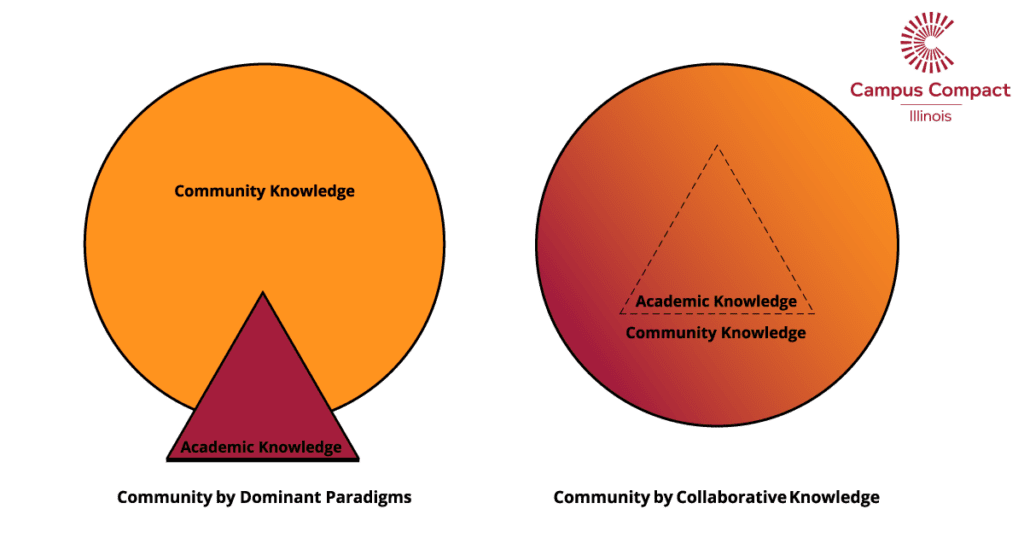Building an Inclusive Knowledge Structure for Community Engagement – Nadinne Cruz
On April 11th, Illinois Campus Compact hosted Nadinne Cruz, former director of the Haas Center for Public Service at Stanford University, at University of Chicago for a workshop on engaging the diverse communities that surround colleges and universities. Throughout the day attendees learned more of Cruz’s unique background as a proponent of greater equality and civil rights in the Philippines during Ferdinand Marcos’ time in power. After contending with political repression in the Philippines, Cruz brought her unique perspective on civic engagement to higher education in the United States.
Although we enjoy a culture of broad political acceptance in the United States, Cruz believes that our communities could be made more inclusive and fruitful by rethinking the way we structure academia. To Cruz, institutions of higher education are one of the most influential forces in our society, but she stressed that they tend to feel exclusive to non-college graduates. Much of the workshop revolved around the complicated task of reframing an academic institution’s work as a common good.
De-centering the Acadamy
One of the primary aspects of the presentation was the notion of a de-centered academic structure. That is to say an institution of higher education that promotes learning both within traditional academic settings and through the community. Cruz asserts that the traditional academic structures contribute to communities of academics sequestered from the greater community.
Cruz proposed a strategy to combat this problem. First, the academy must recognize the knowledge held by non-academics within the community and develop strategies to integrate that knowledge. Second, the civically-engaged scholars within academia must build multi-layered civic-engagement programming that provides varied levels of service and learning.
By offering engagement opportunities to both students and the community that run the gamut of service vs. learning, academia acknowledges that each problem in a community has a unique solution. And sometimes higher education institutions aren’t equipped to solve certain problems.
For example, some problems – such as food scarcity – can be addressed mostly through committed service and resources. These are things that higher education can provide in abundance. However, other problems are better suited to long-term learning initiatives. In this case, institutions can still provide resources and volunteers, but they must rely on community partners to act as the carrier of knowledge, because student resources on a campus are highly transient.
By acknowledging the value of transferred knowledge outside of academia, higher education can better embrace its role as facilitator of engagement programming. Its goal should be to create an atmosphere were community knowledge resources flow more freely between community and campus. This symbiotic relationship can create graduates who are better prepared and more willing to step out into their community in collaboration to solve problems.
 Blog
Blog 


